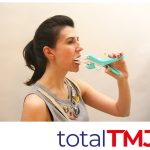Across the dental profession, dental caries has been the key disease we have treated for many years. More recently, tooth wear has been recognised as an increasing problem and may become a much greater challenge for clinicians in the years to come. Preventing and managing tooth wear and tooth surface loss (TSL) will be key to the conservative and holistic dentistry that we strive for. This means that we need effective ways to predict and/or monitor the progression of wear – could digital technologies help with this?
Why is tooth wear such an issue?
Tooth wear is a multifactorial condition that can be slow to progress and therefore symptoms may not appear until late in the disease process.[i] As colleagues will know, tooth wear is typically the result of attrition, erosion or abrasion – or a combination of these. There are several possible chemical and mechanical causes, including an acidic diet, gastric reflux, as well as abrasive food or dental products, and parafunction. The data varies widely regarding the prevalence of moderate to severe tooth wear among the global population. However, it is estimated to be between 20% and 45% in adults.[ii]
With regards to how the condition impacts daily life, patients with tooth wear are nine times more likely to report dissatisfaction with their teeth.[iii] Higher levels of tooth wear have also been linked to a lower oral health-related quality of life.[iv] Severe versions of the condition have been linked to psychological discomfort and disability in patients, regardless of socio-demographic factors or specific clinical characteristics.[v] As such, it is important that the dental team is able to help patients manage tooth wear, minimise its impact and prevent further progression.
Clinical management of tooth wear
As is the case in many areas of dentistry, patients tend to be motivated to seek help for tooth wear primarily due to aesthetic concerns. One study found this to be true for 59% of participants, compared to 40% complaining of sensitivity, 17% with function issues and 14% with pain.[vi] Another study found similar results, despite endodontic treatment being indicated in 11% of tooth wear patients evaluated, all of whom presented with late-stage dental erosion and exposure of the pulp.[vii]
Personally, I see an increasing number of patients present with fractures in the teeth due to prolonged wear. These are especially common in older people, and the fractures can be catastrophic for their natural dentition. This, combined with the complex aetiology behind the development of the condition and an ageing population, means that effective preventative and clinical management of tooth wear is crucial, albeit challenging.
Where possible, a focus should be placed on prevention and early diagnosis so as to avoid potentially extensive treatment and rehabilitation. This requires on-going assessment and recording of tooth surface levels, collecting comparative data that can be utilised over time to evaluate TSL. The Tooth Wear Evaluation System (TWES) 2.0 has been proven to be a reliable tool in the assessment of tooth wear severity.[viii] It also contains a decision tree relating to the taxonomy of tooth wear to aid diagnosis.
The potential of digital
 There has also been development in the digital techniques available to support management of tooth wear. For example, intraoral scanners may be useful in the continuous monitoring of TSL, as they have shown promise in being able to detect minor tissue loss over time.[ix] Comparing scans from consecutive patient appointments can provide a relatively easy way to measure the pace of TSL, and help clinicians to detect a potential issue and deliver early intervention. These same images could also be used for digital models that facilitate occlusal management and therefore help to prevent further wear in the future. Existing technologies are not yet capable of supporting this workflow efficiently, but this is definitely food for thought.
There has also been development in the digital techniques available to support management of tooth wear. For example, intraoral scanners may be useful in the continuous monitoring of TSL, as they have shown promise in being able to detect minor tissue loss over time.[ix] Comparing scans from consecutive patient appointments can provide a relatively easy way to measure the pace of TSL, and help clinicians to detect a potential issue and deliver early intervention. These same images could also be used for digital models that facilitate occlusal management and therefore help to prevent further wear in the future. Existing technologies are not yet capable of supporting this workflow efficiently, but this is definitely food for thought.
There is currently scope for digital solutions to be incorporated within the planning of restorative treatment following tooth wear diagnosis. Face scanning, CBCT and intraoral scans may be combined to facilitate 3D planning that enables the design of restorations that are the most appropriate length, level, shape and colour for the patient’s face.[x]
Additionally, digital solutions can be used to design and fabricate night guards to help protect new restorations and prevent further wear. The potential advantages of digital impressions and manufacturing processes in this area include shorter turnaround and chair times, as well as a simpler workflow for the dental team.
There is definitely still scope for improvement within all these digital workflows but the early results are very encouraging. Of course, prevention is always better than cure, so anything that can be done to avoid tooth wear in the first place must be prioritised. If digital technologies can help clinicians to risk assess for tooth wear, as well as treat it and restore dentition once the condition is under control, this would be a very valuable tool for the future.
Author: President – Elect of the British Endodontic Society
Alyn Morgan graduated from Leeds Dental School in 1995 and worked in general dental practice for 12 years. He undertook an MSc in Endodontics at the Eastman Dental Institute which was awarded with Distinction in 2009. He has worked as a specialist in endodontic practice for 10 years at U Dentistry in Ilkley and has been a Senior Clinical Teaching Fellow in Endodontics at both the Eastman and Leeds Dental Institutes. He is currently Head of Endodontic Teaching at Leeds where he teaches undergraduates, postgraduates and hands-on courses for GDPs. He is President of the British Endodontic Society
[i] Wetselaar, P, Wetselaar-Glas, MMJ, Katzer, LD, Ahlers, MO. Diagnosing tooth wear, a new taxonomy based on the revised version of the Tooth Wear Evaluation System (TWES 2.0). J Oral Rehabil. 2020; 47: 703– 712. https://doi.org/10.1111/joor.12972
[ii] Schlueter, N., Luka, B. Erosive tooth wear – a review on global prevalence and on its prevalence in risk groups. Br Dent J 224, 364–370 (2018). https://doi.org/10.1038/sj.bdj.2018.167
[iii] Al-Omiri M K, Lamey P-J, Clifford T. Impact of tooth wear on daily living. Int J Prosthodont 2006; 19: 601-605.
[iv] Mehta, S., Loomans, B., van Sambeek, R. et al. Managing tooth wear with respect to quality of life: an evidence-based decision on when to intervene. Br Dent J 234, 455–458 (2023). https://doi.org/10.1038/s41415-023-5620-4
[v] Li MHM, Bernabé E. Tooth wear and quality of life among adults in the United Kingdom. Journal of Dentistry. 2016: 55; 48-53 https://doi.org/10.1016/j.jdent.2016.09.013.
[vi] Wazani, B., Dodd, M. & Milosevic, A. The signs and symptoms of tooth wear in a referred group of patients. Br Dent J 213, E10 (2012). https://doi.org/10.1038/sj.bdj.2012.840
[vii] Sivasithamparam, K., Harbrow, D., Vinczer, E. and Young, W. (2003), Endodontic sequelae of dental erosion. Australian Dental Journal, 48: 97-101. https://doi.org/10.1111/j.1834-7819.2003.tb00016.x
[viii] Roehl, JC, Jakstat, HA, Becker, K, Wetselaar, P, Oliver Ahlers, M. Tooth Wear Evaluation System (TWES) 2.0—Reliability of diagnosis with and without computer-assisted evaluation. J Oral Rehabil. 2022; 49: 81– 91. https://doi.org/10.1111/joor.13277
[ix] Witecy C, Ganss C, Wöstmann B, Schlenz M, B, Schlenz M, A: Monitoring of Erosive Tooth Wear with Intraoral Scanners In vitro. Caries Res 2021;55:215-224. doi: 10.1159/000514666
[x] Yar, R. Digital workflows for the management of tooth wear. Br Dent J 234, 427–431 (2023). https://doi.org/10.1038/s41415-023-5657-4




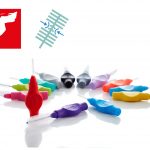
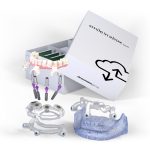

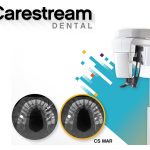

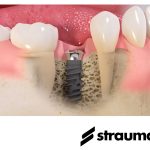



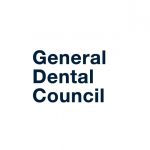

 There has also been development in the digital techniques available to support management of tooth wear. For example, intraoral scanners may be useful in the continuous monitoring of TSL, as they have shown promise in being able to detect minor tissue loss over time.
There has also been development in the digital techniques available to support management of tooth wear. For example, intraoral scanners may be useful in the continuous monitoring of TSL, as they have shown promise in being able to detect minor tissue loss over time.